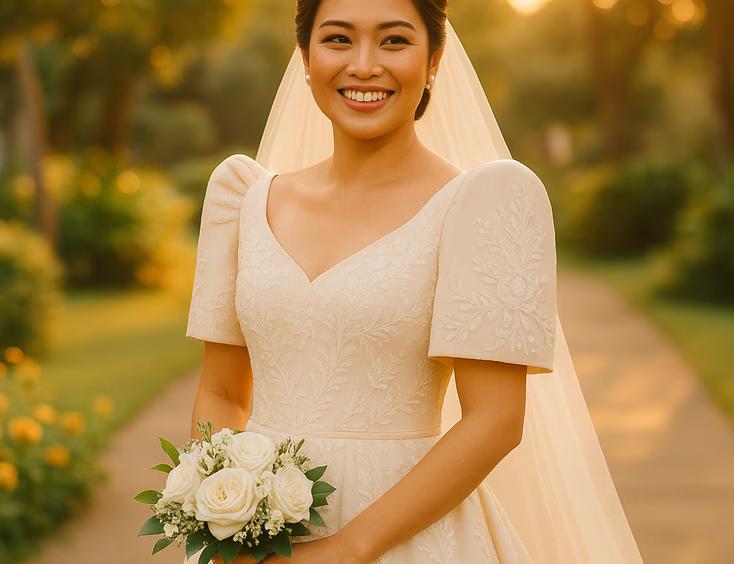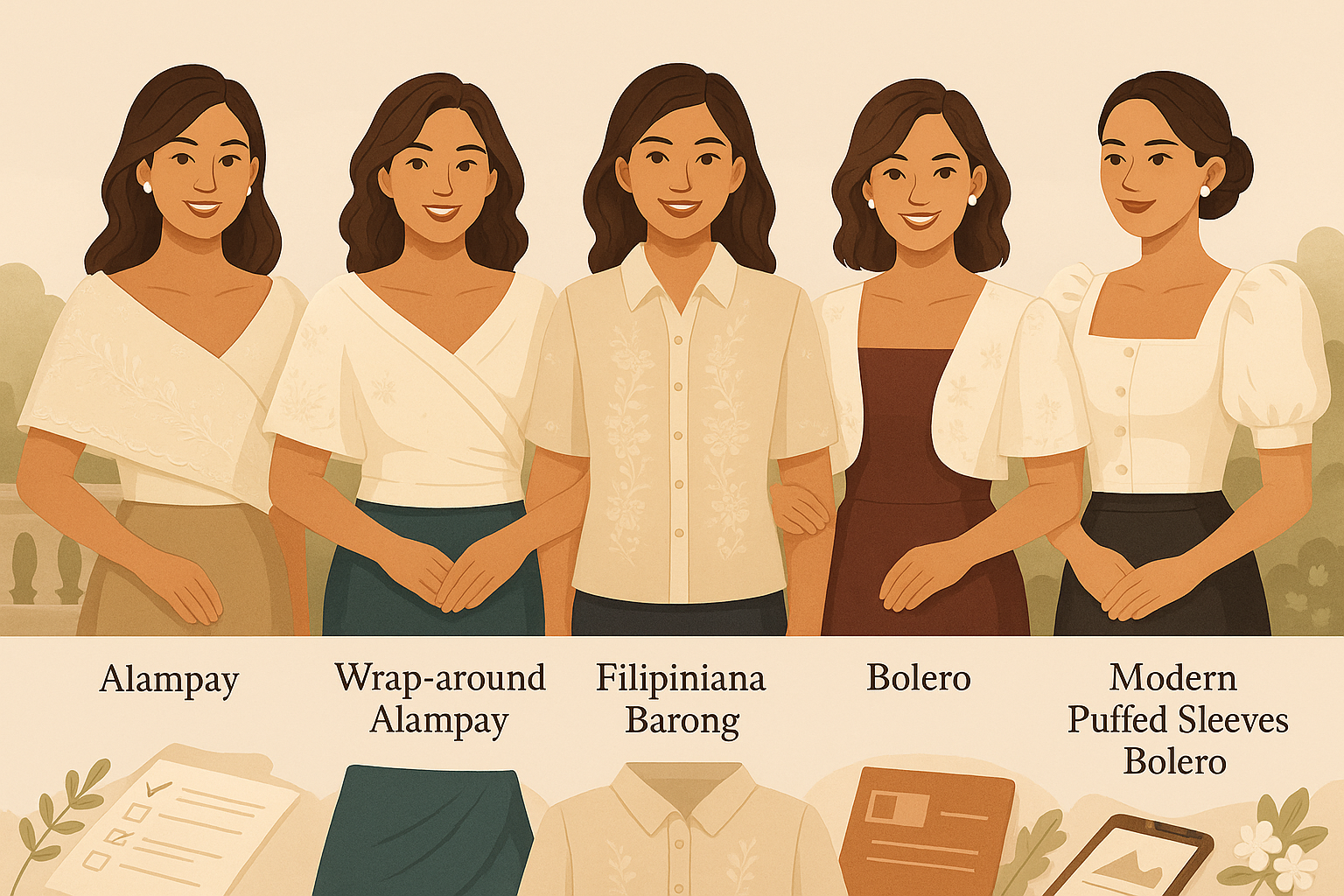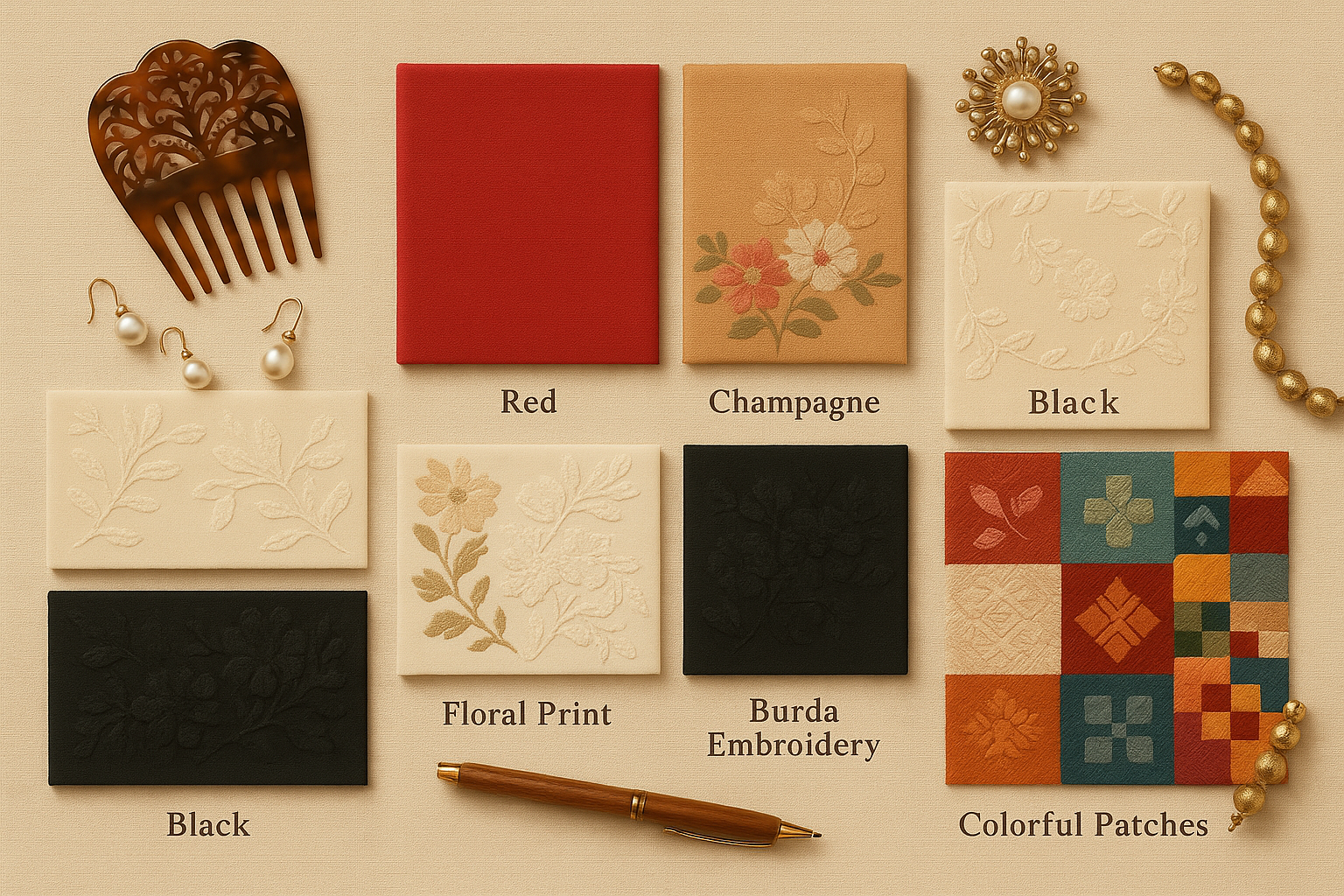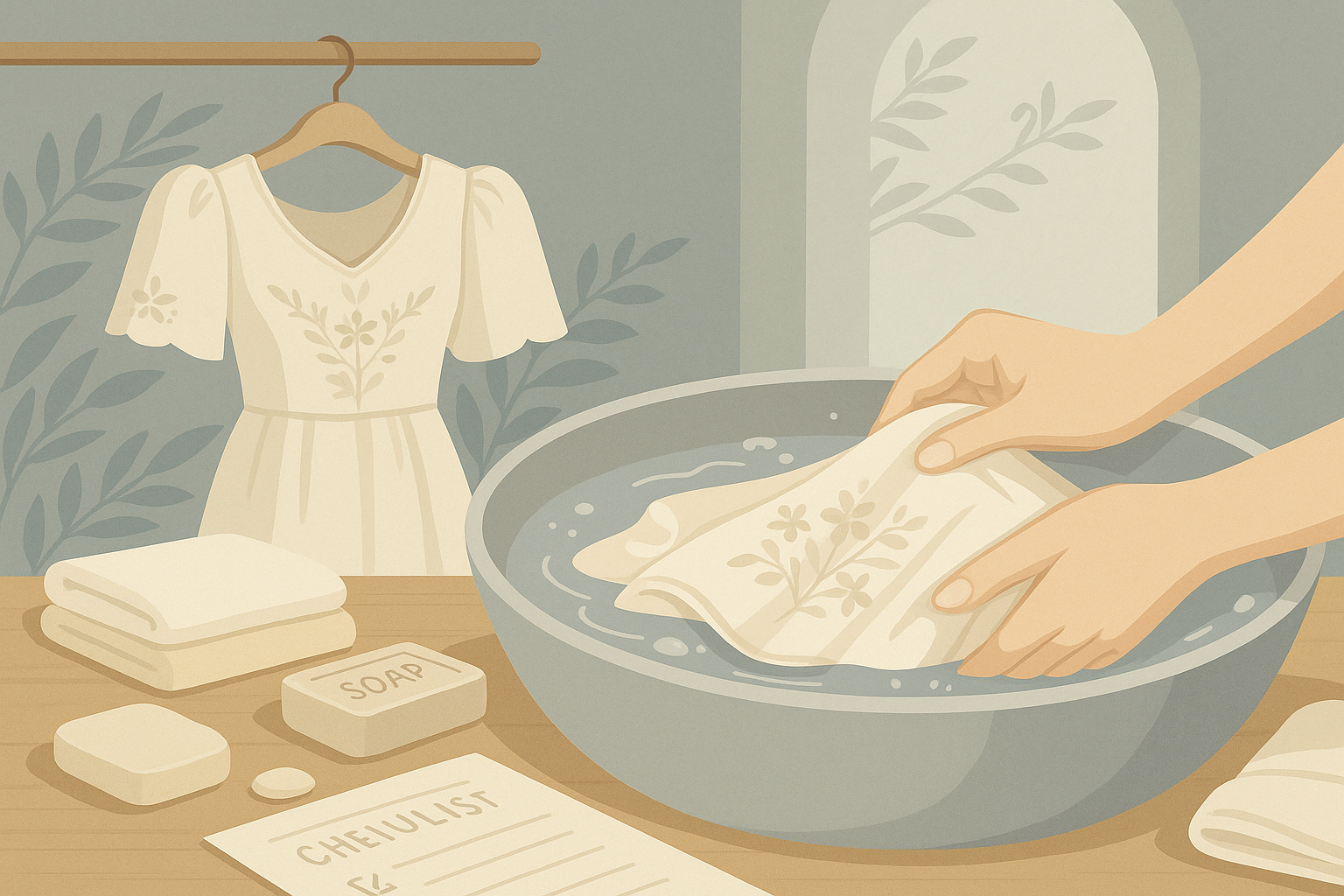
The Ultimate Filipiniana Attire Guide: How to Choose the Best Filipiniana for Your Wedding

Are you a Filipina bride-to-be dreaming of a beautiful yet budget-friendly Filipiniana-themed wedding or prenup shoot? The Filipiniana attire—the iconic traditional dress of Filipina women—has long captivated many for its elegance, grace, and timeless versatility. Wearing it on your special day not only celebrates your unique heritage but also creates a lasting impression on everyone present.
Yet, it's normal to feel a bit overwhelmed. Many brides are unfamiliar with the full story of Filipiniana: its historical roots, the variety of styles, color options, patterns, recommended accessories, care, and maintenance. Choosing the perfect Filipiniana for your body type and skin tone can seem daunting. Plus, you may wonder how to style it in a fresh, modern way—or where to buy an authentic piece at a reasonable price.
Don't worry—we're here to guide you.
This comprehensive guide will walk you through everything you need to know about Filipiniana attire, empowering you to choose and wear it with confidence and style on your big day.
What You'll Learn
- What is Filipiniana and what does it symbolize?
- The 5 different styles of Filipiniana tops
- The most popular colors and patterns for Filipiniana attire
- How to choose the best Filipiniana for petite, curvy, or tall women
- Where and how to buy affordable Filipiniana attire
- Tips on accessorizing and styling your look
- Essential care and maintenance tips for your Filipiniana
What is Filipiniana and What Does It Symbolize?
Filipiniana refers to the traditional attire worn by women in the Philippines, renowned for its distinctive silhouette and cultural significance. Often called the Maria Clara (named after the heroine in José Rizal's classic novel Noli Me Tangere), the Filipiniana is the female counterpart to the men's Barong Tagalog.
Filipiniana attire is more than just fashion—it's a vibrant symbol of the Philippines' rich and multifaceted history. Its design embodies influences from Spanish, Chinese, Malay, Muslim, and various indigenous cultures, reflecting the country's diverse heritage.
Wearing Filipiniana is a statement of pride and identity, representing values such as modesty, dignity, grace, and patriotism. For Filipino women, the Filipiniana isn't just a dress—it's a proud declaration of heritage and a tribute to the generations who came before.

5 Different Styles of Filipiniana Tops
The Filipiniana dress comes in various styles, each with unique charm and features. Here are the five most popular styles of Filipiniana tops you'll encounter today:
1. Alampay
The Alampay is a rectangular shawl, draped over the shoulders and tied at the front. Traditionally worn for formal or festive events (like weddings and grand celebrations), the Alampay's beauty lies in its versatility and ease of wear. It offers elegant coverage for the arms and chest, making it ideal for both modesty and sophistication.
2. Wrap-around Alampay
A modern take on the classic, the Wrap-around Alampay is wrapped around the upper body and tied at the side. This style is popular for semi-formal or casual occasions (such as family gatherings and picnics). The wrap design is comfortable, flattering on many body shapes, and easily accentuates the waist for a shapely silhouette.
3. Filipiniana Barong
Inspired by the Barong Tagalog, the Filipiniana Barong features a button-down shirt with a collar and long sleeves, tailored specifically for women. It exudes sophistication and a streamlined elegance, making it perfect for formal occasions.
4. Filipiniana Bolero
This style features a short, cropped jacket made from cotton, linen, or organza, often adorned with floral prints, burda embroidery, or colorful patches. The Bolero adds a playful, charming layer to your ensemble and is perfect for adding a splash of color or detail to your look.
5. Modern Puffed Sleeves Bolero
Drawing inspiration from current fashion trends, the modern Bolero features dramatic puffed sleeves that extend from the shoulder to the elbow. This style is ideal for brides who want to blend tradition with bold, contemporary flair, creating a striking, memorable look for special occasions.

The Most Popular Colors and Patterns for Filipiniana Attire
Selecting the right colors and patterns for your Filipiniana can transform the mood and overall impact of your ensemble. Your choice can reflect your personality, highlight your wedding theme, and help you stand out in photographs.
Floral Prints
Floral motifs—depicting flowers, leaves, vines, or branches—are classic to Filipiniana attire. They lend a romantic, feminine touch and can add vibrant splashes of color or subtle elegance, depending on your preference. Traditional floral patterns such as roses, orchids, hibiscus, and sampaguita are especially beloved.
Burda (Embroidery)
Burda is a unique embroidery technique where patterns are cut into the fabric and stitched with thread or lace. Burda embroidery elevates Filipiniana pieces, adding exquisite texture, sophistication, and a handcrafted feel. Popular burda designs include circles, diamonds, stars, and floral shapes.
Patches
Patches are pieces of fabric sewn or attached to the garment, adding playful, colorful detail. Whether in the form of flowers, logos, abstract shapes, or even numbers, patches bring a fun and modern edge to the traditional Filipiniana, making it ideal for more relaxed or creative celebrations.
The Best Filipiniana Attire for Petite Women
If you're petite, you might worry that the typically long, flowing Filipiniana could overwhelm your frame. However, with the right styling choices, the Filipiniana can beautifully complement petite figures:
- Opt for a fitted bolero and a full-length skirt. This combination creates a sleek, vertical line that visually elongates your body, making you appear taller.
- Choose a high waistline or a belted look. This raises your waist and lengthens the appearance of your legs.
- Stick to solid colors or small prints. These create a unified, uninterrupted look, preventing your figure from appearing “cut in half.”
- Select simple, elegant designs. Minimalist styles avoid extra bulk and keep your overall appearance sophisticated and chic.
The Best Styles for Curvy Women
Curvy women can absolutely shine in Filipiniana attire by choosing styles that highlight their best features:
- Select fitted boleros and full skirts. This pairing celebrates your waist and hips, enhancing an hourglass silhouette.
- Look for Barongs with V-necks or scoop necks. These draw the eye upward, highlighting your face and bust.
- Embrace wrap styles or tie accents. These details cinch the waist and add definition.
- Choose darker or muted colors. These can provide a slimming effect and create a harmonious, refined look.
The Best Styles for Tall Women
Tall women can achieve a balanced, graceful look by following these style tips:
- Go for a loose bolero top with a full skirt. This provides proportion and movement, enhancing your natural poise.
- Opt for low or drop waistlines. These visually shorten the torso for a more balanced appearance.
- Add flare or ruffles. Such embellishments introduce volume and femininity to your look.
- Experiment with bright or bold colors. Vibrant shades add warmth and personality, ensuring your presence feels lively rather than austere.
- Try modern or trendy designs. Don't be afraid to incorporate contemporary twists to keep your style fresh and updated.
Where to Buy Affordable Filipiniana Attire
Filipiniana attire can be found at local boutiques, cultural shops, artisan markets, or reputable online sellers. Look for stores that offer a range of styles and sizes, and prioritize quality fabrics like piña, jusi, cotton, linen, or organza for comfort and authenticity. When shopping online, be sure to check customer reviews and sizing charts for the best fit.
How to Buy Affordable Filipiniana Attire
To purchase Filipiniana attire that fits your budget and preferences, follow these steps:
- Browse Styles and Colors:
Visit local shops or explore online marketplaces to compare available designs, fabrics, and color options. - Choose Your Size:
Consult sizing charts and, if possible, try on sample pieces to ensure the best fit for your body type. - Provide Your Details:
If ordering online, prepare your full name, address, and contact number for smooth delivery. - Settle Payment:
Select a secure payment method, such as cash on delivery, GCash, or bank transfer.
Additional Tips:
- The buyer typically shoulders shipping costs for online purchases.
- Expect a lead time of several days to a week for custom or pre-order items.
- For international orders, inquire about minimum order requirements and shipping policies.
How to Accessorize and Style Your Filipiniana Attire
You don't have to break the bank or overthink to accessorize your Filipiniana ensemble beautifully. Here are expert tips for elevating your look:
Match Accessories to Your Filipiniana's Color and Style
- For a white Filipiniana, classic pearl earrings and a necklace are elegant choices.
- Red Filipiniana pairs beautifully with gold bangles or a statement ring.
Coordinate with Your Wedding Theme and Formality
- For traditional, formal weddings, consider heritage accessories like a peineta (decorative hair comb) or a tambourine necklace (with dangling coins).
- For casual or modern celebrations, opt for a floral headband or a stylish clutch bag.
Let Your Personality Shine
- Minimalist brides can choose subtle, elegant pieces.
- Those with bold style can select colorful, statement accessories.
Hairstyle Matters
- For round faces or those wearing a Filipiniana Barong, a sleek bun or ponytail is flattering.
- For long faces or when wearing a Bolero, consider loose curls or braids for balance.
Choose Makeup that Complements Your Look
- Fair skin and black Filipiniana? Try nude or pink lipstick.
- Tan skin and champagne Filipiniana? Coral or red lips add warmth.

How to Care for and Maintain Your Filipiniana
Proper care ensures your Filipiniana remains beautiful and lasts for years. Here's how to preserve its quality:
Cleaning:
- Hand wash or dry clean, depending on fabric. Delicate materials like piña, jusi, or silk should always be dry cleaned. Cotton, linen, and organza can be gently hand washed.
Detergent:
- Use mild detergent and cold water; never use bleach or harsh softeners. For whites, choose a gentle formula; for colored pieces, opt for color-safe detergent.
Drying:
- Air dry by hanging or laying flat; avoid using a dryer or direct ironing. Piña, jusi, and silk should be hung, while cotton or organza are best dried flat.
Storage:
- Fold or hang in a cool, dry place, away from sunlight and humidity. Store delicate pieces in plastic bags and cotton/linen in breathable garment bags.
Conclusion
Now you're equipped to choose, style, and care for your Filipiniana attire—ready to showcase your heritage with pride on your wedding day or any special occasion. When you step into your Filipiniana, you celebrate not only your beauty but also the spirit and story of Filipino women.
Embrace the tradition, honor your roots, and let your Filipiniana attire make your celebration truly unforgettable.





